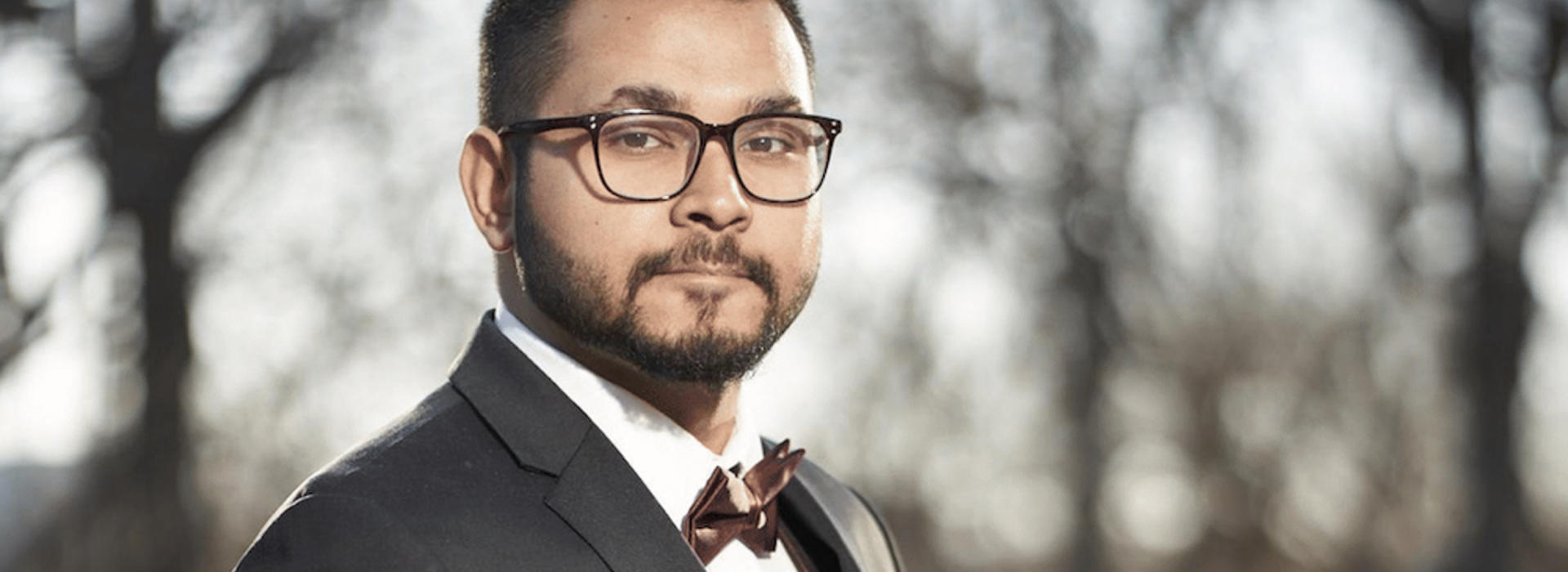
Welcoming the Class of 2025: Koushik Paul
After immigrating to the United States from Bangladesh in 2011, Koushik Paul’s father developed uncontrolled diabetes and faced tremendous healthcare access-related barriers in rural St. Charles, Minn., due to lack of insurance. Paul, now an incoming University of Minnesota Medical School student, took on three jobs at the time to afford medical insurance, only to realize that preexisting conditions would not be covered.
“My introduction to the U.S. healthcare system was navigating the disparities within my family,” Paul said. “Navigating that moment with my dad really woke me up to the challenges that rural folks face accessing the healthcare system. This is often compounded by other social determinants of health, such as food and housing insecurity, transportation barriers and more. Talking to fellow migrant farmworkers in St. Charles, I realized my family wasn’t the only one to experience these barriers, and I wanted to do something about it.”
Although healthcare piqued his interest, he still had doubts as a first-generation immigrant and college student. As a University of Minnesota Duluth undergraduate student, a family medicine doctor at the Fond Du Lac Reservation, Arne Vainio, MD, a Medical School alumnus, mentored and inspired him to continue. Paul completed an internship at the reservation’s Min No Aya Win Clinic where he trained under Dr. Vainio for over 300 hours, during which time he observed similar health inequities that his own Tribal community face in Bangladesh. This had a profound impact on Paul, and he decided to continue medical education at the Medical School, Duluth Campus because of its unique rural and Native health focus.
In partnership with his mentor, Cuong Pham, MD, an assistant professor in the Department of Medicine, Paul has been instrumental in organizing two roundtable discussions about the opioid crisis in Native communities. The roundtables were an opportunity for community members and medical providers to come together and discuss issues related to opioid addiction, treatment, stigma and discrimination that Native patients face while accessing addiction care in the Twin Cities. Paul estimates that this initiative has reached 200 people, including community members and medical providers and created a platform where conversations can begin directly with providers to improve the experiences of Native patients seeking addiction care.
“I’m very interested in community-based participatory research (CBPR),” Paul said. “I feel like CBPR allows us to honor and respect tremendous community strengths and come up with interventions and treatment programs in a way that is grounded in the community wisdom.”
In fact, these roundtables emanated out of the community engagement done by Paul during his CBPR project, “Family-Centered Opioid Addiction Treatment (FaCT).” Alongside Dr. Pham, Paul had the opportunity to work directly “with” the community versus “on” the community through the CBPR framework.
“Rather than rolling out another survey, we recognized the place of oral stories in the lives of Indigenous people and spoke to patients, their family members, medical providers, Elders in the community and cultural liaisons about what needs to change in addiction treatment,” Paul said. “This led to a formation of an Intergenerational Community Advisory Board from the Native community in the Twin Cities who requested these roundtables on opioids.”
In terms of research, Paul emphasized the importance of keeping everything community-focused. For instance, in the realm of chronic disease management, advice to eat healthier and increase physical activity wouldn’t be very helpful to individuals living in a food desert or living in unsafe neighborhoods where they lack access to parks.
“We talk to patients, their family members, medical providers, Elders in the community and spiritual advisors about what needs to change in addiction treatment,” Paul said. “We wanted to make sure that the data we gathered and the stories we were privileged enough to hear were being interpreted the right way.”
Paul’s choice of the University of Minnesota Medical School was largely based on his lived experience and CBPR focus.
“Health inequities aren’t going to magically disappear. I see myself taking care of underserved populations – urban or rural Indigenous – and I think my training has to reflect that,” Paul said. “The Medical School does a really good job integrating community-centered ideals into the curriculum. I wanted this in my academic DNA to take forward with me.”